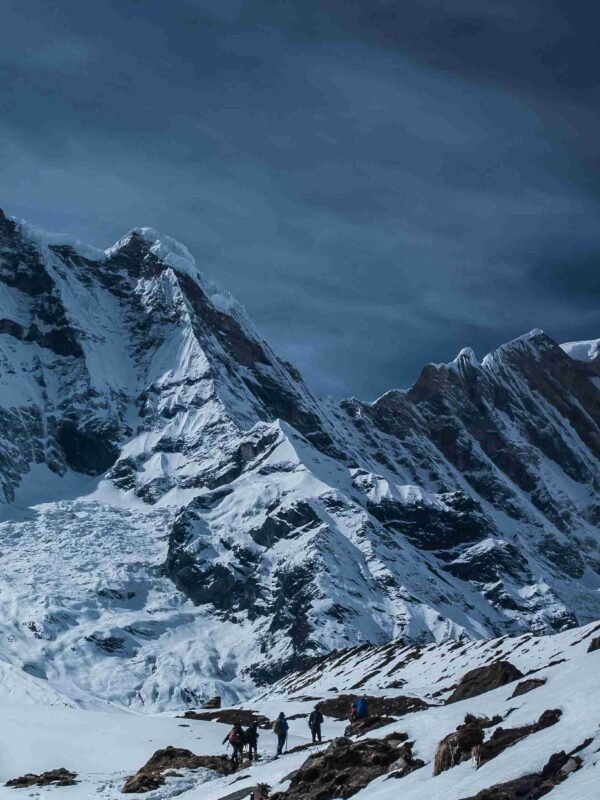
Introduction
Amidst the awe-inspiring landscapes of the Himalayas lies one of the most breathtaking yet perilous mountains in the world: Nanga Parbat Mountain Pakistan. Known as the “Killer Mountain,” it has earned a reputation for its challenging climbs and extraordinary beauty.
Standing as the ninth-highest mountain in the world, with an elevation of 8,126 meters (26,660 feet), Nanga Parbat is a testament to the grandeur and diversity of Pakistan’s geographical landscape.
This mountain, with its rugged peaks, vast glaciers, and lush surrounding valleys, draws adventurers, nature enthusiasts, and cultural explorers from across the globe.
Let’s dive into the fascinating details about Nanga Parbat Mountain Pakistan, exploring its history, geography, cultural significance, and why it should be on every travel enthusiast’s bucket list.
A Glimpse into Nanga Parbat’s History
The name “Nanga Parbat” translates to “Naked Mountain,” a reflection of its bare, rocky slopes that rise starkly against the sky. Its formidable reputation has earned it the moniker “Killer Mountain,” as many early climbers lost their lives attempting to conquer it.
Early Expeditions and Triumphs
- The first recorded attempts to scale Nanga Parbat date back to the British colonial era in the late 19th century.
- Several German expeditions in the early 20th century sought to conquer the mountain but met with tragedy due to avalanches, extreme weather, and challenging routes.
- In 1953, Austrian climber Hermann Buhl became the first person to reach the summit. Remarkably, Buhl completed the final leg of his ascent solo, without supplemental oxygen, a feat that remains legendary in mountaineering history.
The Challenges That Persist
- Extreme weather conditions, frequent avalanches, and the sheer scale of the mountain contribute to its high fatality rate.
- Despite modern advancements in climbing gear and techniques, Nanga Parbat remains one of the most difficult peaks to climb.
Geography and Natural Features of Nanga Parbat
Located in the Diamer District of Gilgit-Baltistan, Pakistan, Nanga Parbat marks the westernmost point of the Himalayas. It also serves as a natural boundary between the Himalayan range and the Karakoram range, two of the most iconic mountain systems in the world.
The Three Majestic Faces
Nanga Parbat is renowned for its three distinct faces, each presenting unique geographical features and challenges:
- Rupal Face:
- Known as the tallest mountain face in the world, rising over 4,600 meters (15,000 feet) vertically.
- Offers an awe-inspiring sight, with sheer cliffs and cascading glaciers.
- Diamer Face:
- The most commonly used route for climbers due to its relatively “easier” approach.
- Features expansive glaciers and dramatic ice formations.
- Raikot Face:
- Overlooks the stunning Raikot Glacier and is accessible from the famous Fairy Meadows, a popular trekking destination.
Glaciers and Rivers
The mountain is surrounded by sprawling glaciers that feed into the mighty Indus River, a lifeline for Pakistan’s agriculture and hydroelectric power. These glaciers, along with the snow-covered peaks, contribute to the region’s pristine natural beauty.
The Cultural and Mystical Allure of Nanga Parbat
Beyond its physical grandeur, Nanga Parbat Mountain Pakistan holds deep cultural and mystical significance for the local communities.
Folklore and Legends
- Many legends surround the mountain, portraying it as a sacred entity.
- The nearby Fairy Meadows—so named because of local tales that describe it as a dwelling place for fairies—adds a magical dimension to the region’s allure.
The Local Communities
The inhabitants of the region, primarily the Shina and Balti people, are known for their hospitality and unique cultural traditions. Visitors can experience their warm welcome, delicious regional cuisine, and vibrant handicrafts.
Exploring Nanga Parbat: Why It Should Be on Your List
Whether you are an experienced mountaineer or a casual traveler, Nanga Parbat offers something for everyone.
For Adventure Enthusiasts
- The mountain’s challenging routes, such as the Rupal and Diamer faces, attract seasoned climbers from around the globe.
- Trekking opportunities abound, with routes that range from easy trails to rigorous multi-day expeditions.
For Nature Lovers
- The region is a paradise for photographers, with lush green meadows, crystalline glaciers, and panoramic views of towering peaks.
- Wildlife enthusiasts can spot rare species such as the Himalayan ibex, snow leopards, and golden eagles.
For Cultural Explorers
- Immersing yourself in the traditions and stories of the local communities provides a deeper connection to the region.
- The annual festivals, traditional dances, and local music offer a glimpse into the area’s rich heritage.
Nearby Attractions
The areas surrounding Nanga Parbat Mountain Pakistan are dotted with breathtaking sites, making it a versatile destination for travelers.
- Fairy Meadows:
- A picturesque plateau offering unmatched views of Nanga Parbat’s Raikot Face.
- Ideal for camping, photography, and experiencing nature in its purest form.
- Rama Lake:
- Located near Astore Valley, this serene lake is surrounded by lush forests and provides stunning views of Nanga Parbat.
- Indus River Gorge:
- One of the deepest river gorges in the world, it adds to the dramatic landscape of the region.
Best Time to Visit Nanga Parbat
The best time to visit depends on your goals:
Summer (May to September)
- Ideal for trekking and exploring the surrounding valleys.
- The warm weather and clear skies provide optimal conditions for viewing and photography.
Winter (October to April)
- The mountain transforms into a snow-covered wonderland.
- While climbing is nearly impossible due to harsh conditions, winter visits offer a serene and magical atmosphere.
Practical Tips for Visiting Nanga Parbat
To make the most of your trip to Nanga Parbat Mountain Pakistan, proper planning is essential.
- Plan Your Route
- Whether you aim to climb the mountain or explore nearby areas, research and map out your itinerary.
- Hire Local Guides
- Experienced guides can enhance your journey with insights into the region’s history, culture, and geography.
- Gear Up for Adventure
- Pack appropriate clothing and equipment, especially if you plan to trek or camp.
- Acclimatize to the Altitude
- Spend time acclimatizing to avoid altitude sickness.
- Respect Local Customs
- Be mindful of local traditions and practices to ensure a respectful and enjoyable experience.
Interesting Facts About Nanga Parbat
- Second Highest Peak in Pakistan: After K2, Nanga Parbat is Pakistan’s second-highest mountain.
- Western Anchor of the Himalayas: It marks the end of the Himalayan range, distinguishing it geographically from the Karakoram range.
- Historic Tragedies: Several early expeditions met with disaster, adding to its “Killer Mountain” reputation.
- Fairy Meadows Recognition: The meadows are recognized internationally as one of the most beautiful camping sites in the world.
The Role of Nanga Parbat in Tourism and Pakistan’s Economy
Nanga Parbat is a cornerstone of Pakistan’s adventure tourism industry. Its popularity contributes significantly to the local and national economy.
Boosting Local Livelihoods
- Tourism provides income for local communities through guiding services, accommodations, and handicraft sales.
Promoting Pakistan Globally
- As one of the country’s most iconic peaks, Nanga Parbat attracts international attention, showcasing Pakistan as a hub for adventure and natural beauty.
Conclusion
Nanga Parbat Mountain Pakistan is more than just a geographical wonder; it is a symbol of adventure, resilience, and cultural richness. Its towering heights, rugged landscapes, and surrounding attractions make it a destination like no other.
Whether you seek the thrill of a challenging climb, the peace of pristine nature, or the warmth of cultural exploration, Nanga Parbat promises an unforgettable experience. By visiting this majestic peak, you not only immerse yourself in its beauty but also contribute to the preservation and prosperity of one of Pakistan’s most treasured landmarks.
So, pack your bags, embrace the spirit of adventure, and set out to conquer the awe-inspiring Nanga Parbat Mountain Pakistan—a journey that will leave you with memories for a lifetime.


One thought on “Nanga Parbat Mountain Pakistan: A Symbol of Natural Majesty”